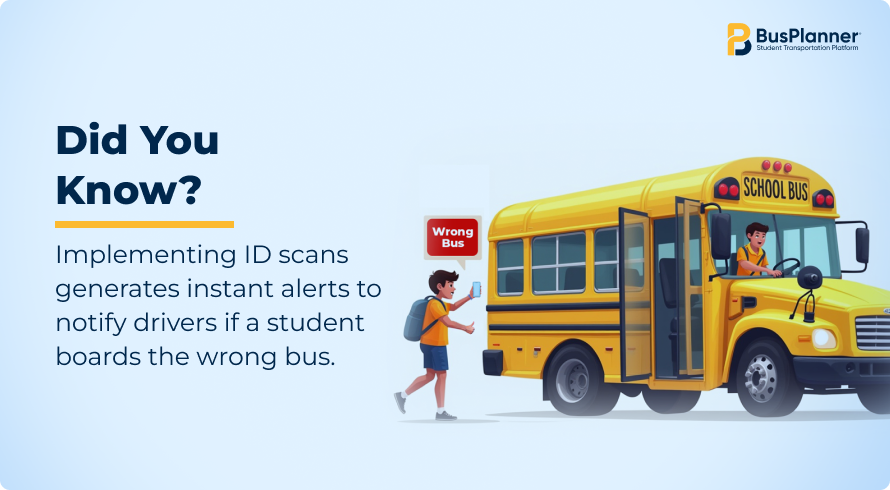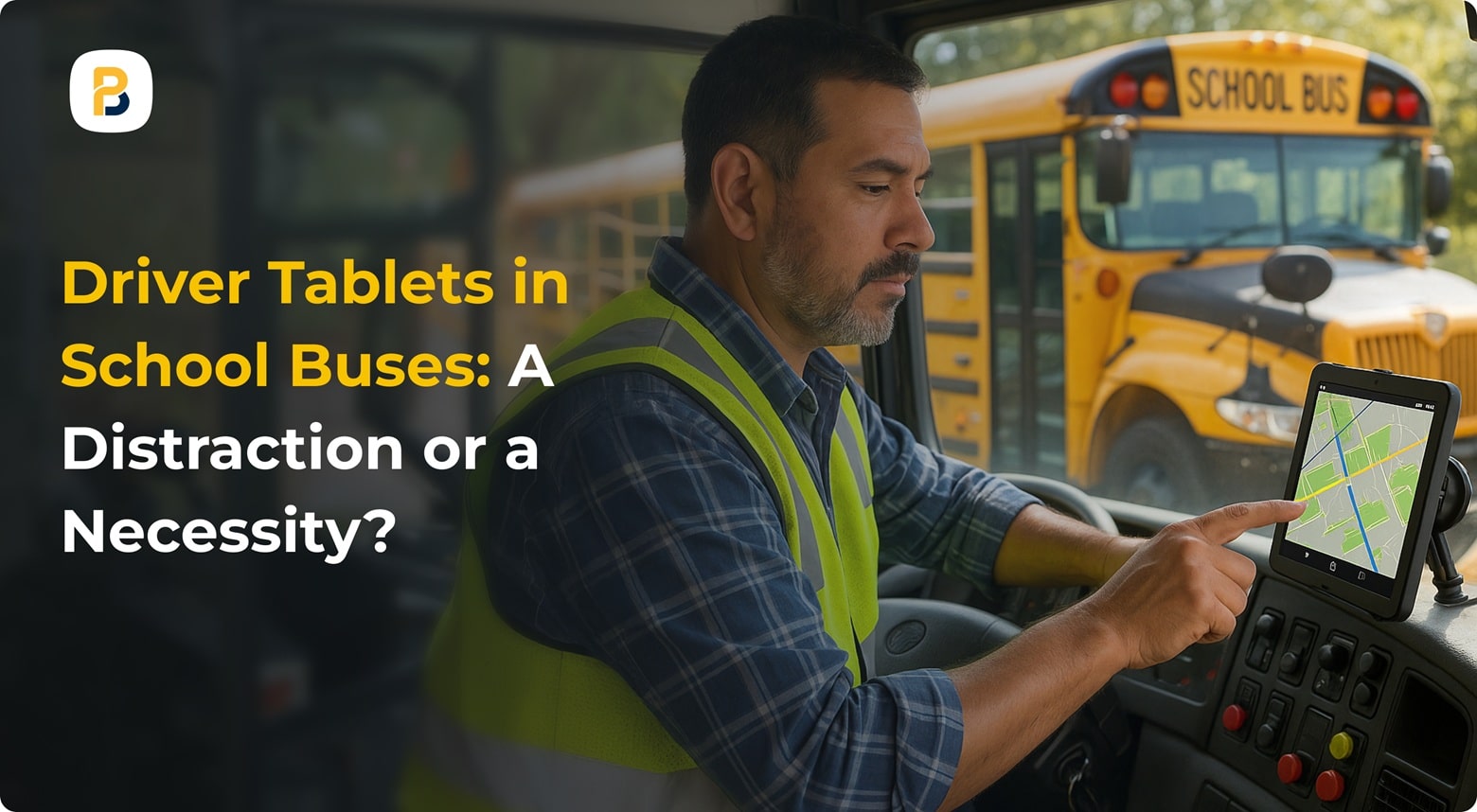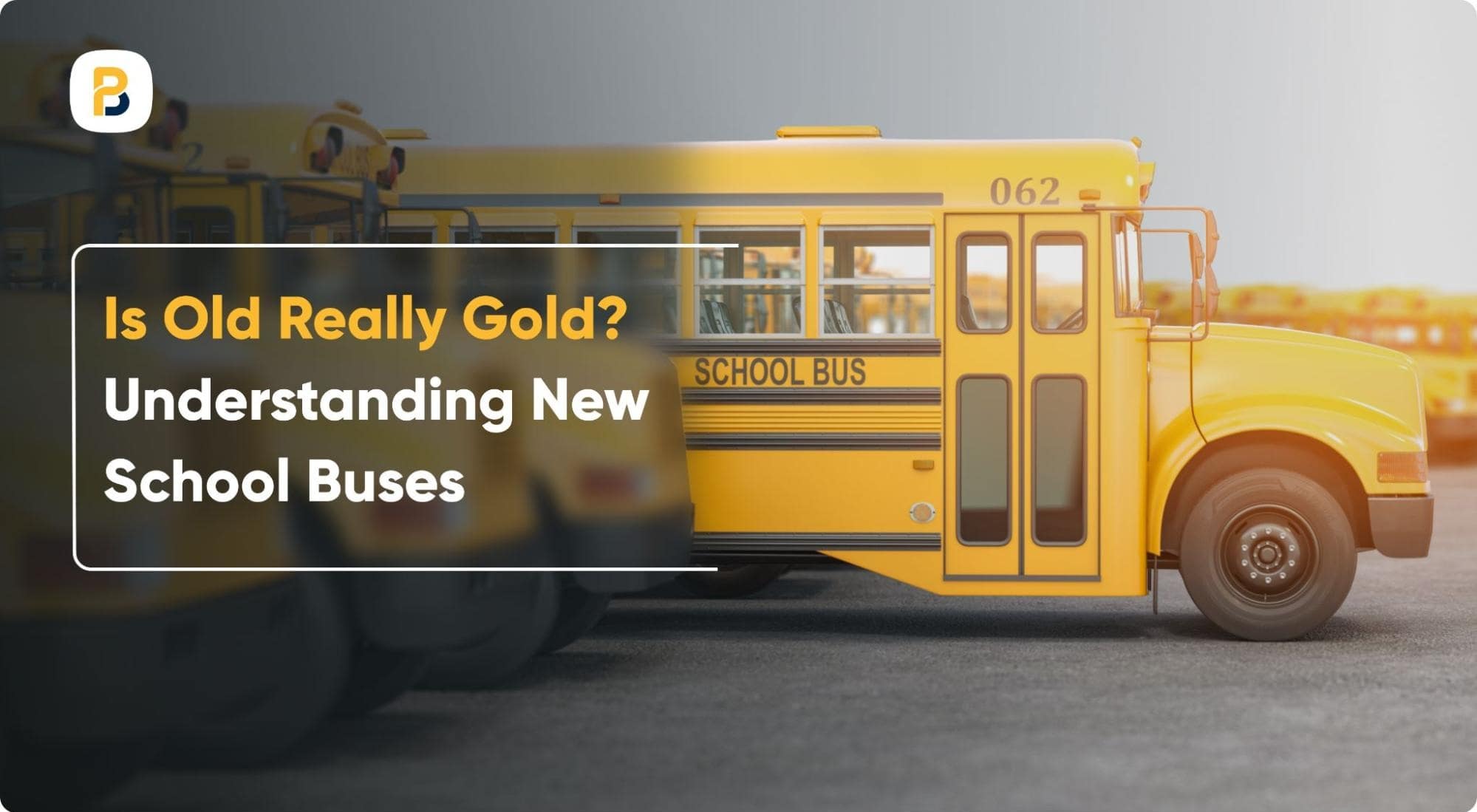There are few things as polarizing as the addition of infotainment systems and large touch screens in vehicles. Some people love the convenience they offer, while others think this addition to the dashboard is a distraction.
For student transportation professionals, this debate becomes even more sensitive, considering that school buses carry the future of the country. Let’s dig deeper and see whether tablets have a place in school buses or if we’re better off without them.
What Role Do Tablets Serve in School Buses?
Tablets are more than just toys that kids use for screen time. In school buses, they can integrate with your student transportation platform and provide critical information to your transportation team.
1. Turn-By-Turn Navigation
Technology in the school bus can bring multiple benefits to transportation teams. Here are some ways tablets improve operational efficiency:
- Pre-Run Updates: Drivers receive updated route information every morning before they start the day. This ensures that there is no confusion among drivers as route changes are relayed in advance.
- Live Maps: Imagine if drivers had access to information for every stop — from a headcount of how many passengers they can expect, to the time and exact location of the pick-up / drop-off point. Well, tablets integrated with school bus routing software do just that, with audio and visual feedback.
- Road Hazard Alerts: Is there an obstacle along the route? Having a tablet can help your school bus drivers safely avoid it thanks to maps that update in real-time!
2. Mass Transit: Replaces Thousands of Cars
As a student transportation professional, there are only so many things you can control. Even if you have everything set up perfectly, something or the other can always come up and upset your plans.
What’s worse if you can’t inform parents ahead of time about route changes or delays and they flood your voicemail with a bunch of angry messages. Well, a tablet may help solve that!
Plus, parents can inform drivers if their kid won’t be riding the bus on a given day, which the driver can update on their tablet, which helps reduce route redundancies.
3. Districts and Families Save Money
Keeping the transportation team updated is just as important as keeping parents looped in. Doing so ensures that everyone within the team is on the same page. Here are some ways a tablet can help:
- Emergencies and Report: Drivers can inform others of road hazards, traffic, and crashes using their tablets, allowing transportation teams to take the correct measures to deal with the situation.
- Starting and Ending Shifts: Tablets make it easier for drivers to check-in and out before and after shifts. Not only does this save time, but also significantly reduced the amount of paperwork.
- Reassign Routes on the Fly: Driver missing in action? Don’t worry! You can reassign routes to drivers with a few clicks using school bus dispatch management software.
4. Student Scans
Managing a bus full of students can be challenging. Sometimes they get off on the wrong stop or they never get on the bus. Combining a powerful student transportation system with the right hardware can help reduce the anxiety that comes with student ridership.

Whenever a student gets on or off the bus, they need to scan their ID. This system allows school districts to know exactly when and where a student gets on or off the bus. Plus, student scans help put parent’s minds at ease, knowing that the transportation department has this measure in place.
The Final Verdict
Larger school districts across North America have already started using tablets as part of their student transportation platform and seen significant improvements in operational efficiency. With a greater push towards paperless reporting and greater accountability, tablets provide more data points for school districts, which is a win for student safety.
Contact us today to learn more about how BusPlanner can help you transition to a more connected transportation department!









